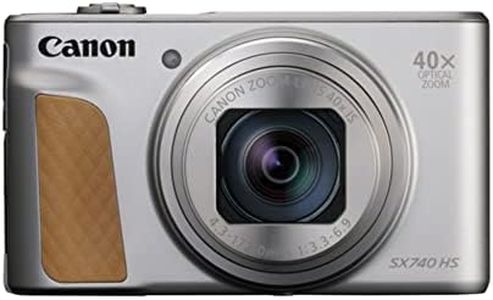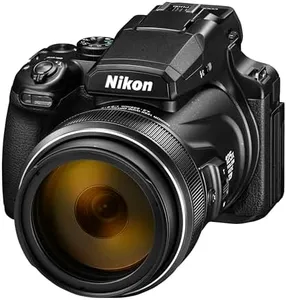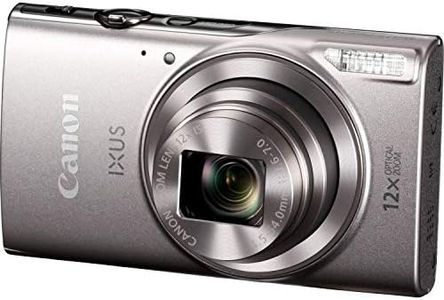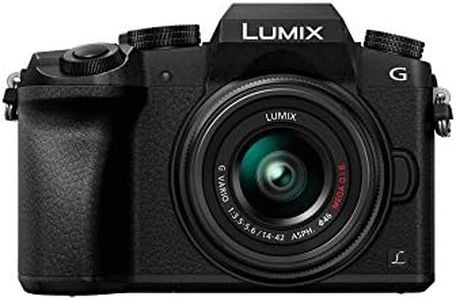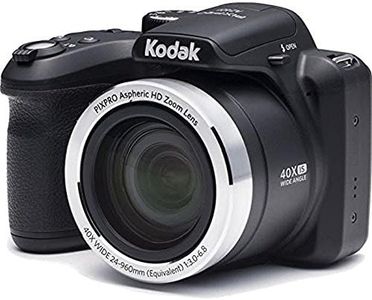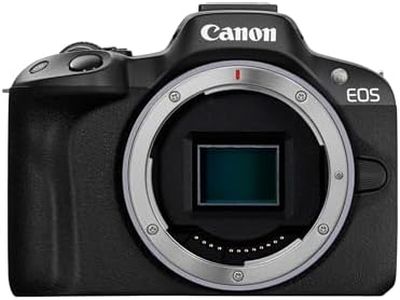We Use CookiesWe use cookies to enhance the security, performance,
functionality and for analytical and promotional activities. By continuing to browse this site you
are agreeing to our privacy policy
8 Best Superzoom Cameras
From leading brands and best sellers available on the web.Buying Guide for the Best Superzoom Cameras
When choosing a superzoom camera, it's important to consider what you'll be using it for. Superzoom cameras are versatile and can be used for a variety of photography styles, from wildlife to sports to travel. They offer the convenience of a wide range of focal lengths without the need to change lenses, making them ideal for capturing distant subjects. Understanding the key specifications will help you select a camera that best fits your needs and preferences.Zoom RangeThe zoom range of a superzoom camera refers to the range of focal lengths it can cover, typically expressed in terms of optical zoom. This is important because it determines how close you can get to your subject without physically moving. Zoom ranges can vary significantly, with some cameras offering up to 60x or more. If you plan to photograph distant subjects like wildlife or sports, a higher zoom range will be beneficial. For general use or travel, a moderate zoom range might suffice, offering a balance between reach and portability.
Sensor SizeSensor size affects the image quality and performance of a camera, especially in low light conditions. Larger sensors generally produce better image quality, with more detail and less noise. Superzoom cameras typically have smaller sensors compared to DSLRs or mirrorless cameras, but there are variations. Common sensor sizes include 1/2.3-inch, 1-inch, and APS-C. If image quality is a priority, look for a camera with a larger sensor. However, if you prioritize compactness and zoom range, a smaller sensor might be acceptable.
Image StabilizationImage stabilization helps reduce blur caused by camera shake, which is especially important at longer focal lengths where even small movements can affect image sharpness. There are two main types: optical and digital stabilization. Optical stabilization is generally more effective, as it physically adjusts the lens or sensor to counteract movement. If you plan to shoot handheld, especially at high zoom levels, look for a camera with good optical image stabilization to ensure sharp images.
Autofocus SystemThe autofocus system determines how quickly and accurately a camera can focus on a subject. This is crucial for capturing fast-moving subjects, such as in sports or wildlife photography. Superzoom cameras may offer different autofocus technologies, such as contrast-detection or phase-detection. For fast and reliable focusing, especially in challenging conditions, look for a camera with a sophisticated autofocus system that includes features like tracking and face detection.
Burst ShootingBurst shooting, or continuous shooting, refers to the camera's ability to take multiple photos in quick succession. This is useful for capturing action shots or fleeting moments. The speed is measured in frames per second (fps). Higher fps rates allow you to capture more frames in a short period, increasing your chances of getting the perfect shot. If you frequently shoot action or sports, consider a camera with a high burst rate. For more static subjects, a lower burst rate may be sufficient.
Video CapabilitiesMany superzoom cameras offer video recording features, which can be important if you plan to capture both photos and videos. Key aspects to consider include resolution (such as 1080p or 4K), frame rates, and additional features like slow motion or time-lapse. Higher resolution and frame rates provide better video quality and smoother motion. If video is a significant part of your usage, look for a camera with robust video capabilities. Otherwise, basic video features might be adequate for occasional use.
Battery LifeBattery life indicates how many shots you can take on a single charge, which is crucial for long shooting sessions or travel. Superzoom cameras vary in battery performance, with some offering several hundred shots per charge. If you plan to use the camera extensively without frequent access to charging, look for models with longer battery life or consider carrying spare batteries. For casual use, moderate battery life may be sufficient.
Size and WeightThe size and weight of a superzoom camera can affect its portability and ease of use. Larger cameras may offer better ergonomics and more features, but they can be cumbersome to carry around. Smaller, lighter models are more convenient for travel and everyday use. Consider how you plan to use the camera and whether portability or additional features are more important to you. If you need a camera for travel or long outings, a compact model might be preferable.

